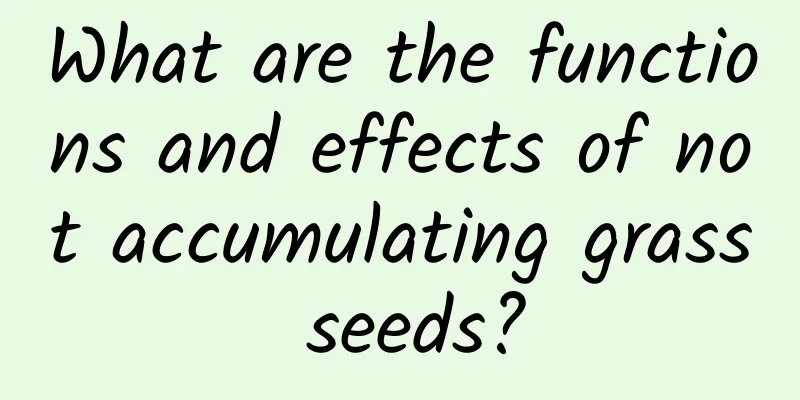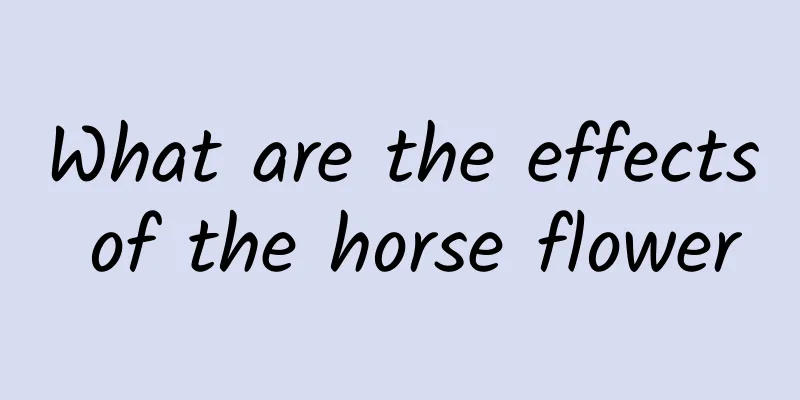What are the functions and effects of not accumulating grass seeds?

|
Bu Ji Cao seeds are the seeds of the traditional Chinese medicine Bu Ji Cao, which can also be used as medicine. There is a saying among the people about Bu Ji Cao: "Bu Ji Cao means three things that don't accumulate: no fire, no milk, and no feces." However, many friends still don’t know much about Bujicao seeds. Today I will introduce to you the origin, functions and effects of Bujicao seeds. Let us also use the grass seeds in our daily life, which can help solve the problem when we encounter the same symptoms. Bu Ji grass, also known as milkweed, opening grass, sheep dung bean, and false locust bean. It is a plant of the genus Cassia of the Leguminosae family. It is distributed in various provinces and regions of China, and is mainly produced in Liaoning, Shandong and other places. Originally from North America, it is now widely distributed throughout the world. The stems, leaves, pods and seeds can all be used as medicine. There is a saying among the people: "Don't accumulate grass, don't accumulate three things: don't accumulate fire, don't accumulate milk, and don't accumulate feces." The so-called "no accumulation of fire" is used to treat stubborn headaches; "no accumulation of milk" refers to the treatment of acute postpartum mastitis in parturient women, commonly known as "milk accumulation"; and "no accumulation of feces" is used to treat habitual constipation that is common among the elderly. This plant is often used as a laxative in medicine, and the seeds are fried to treat malaria; the roots have diuretic effects; This herb is not recorded in the Compendium of Materia Medica, but it is recorded in a few Chinese medicine documents and has a high value for planting and cultivation development. Pharmacological action: The seeds have a laxative effect, which is related to the presence of rhein; and are weakly toxic, which is related to the presence of toxic proteins. Nature and flavor: sweet and bitter, cool and slightly toxic. "Modern Practical Chinese Medicine": bitter, neutral, slightly toxic. Functions and indications: Clears the liver and improves eyesight, detoxifies, strengthens the stomach and promotes bowel movements. Treat red and swollen eyes, dizziness, headache, indigestion, stomachache, abdominal pain, dysentery and constipation. 1. "Supplement to Compendium of Materia Medica": Treats furuncles and carbuncles. 2. Li Chenghu's "Medicinal Plants": Stomachic, anti-dysentery, diuretic, antipyretic, and blood-tonifying. 3. "Modern Practical Chinese Medicine": Strengthens the stomach and regulates the intestines. Treat diarrhea, abdominal pain, chronic constipation, and headache. 4. "Pharmacology": Treats asthma. The seeds can be fried to treat malaria. Usage and dosage. For internal use: decoct in water, 2-3 qian; grind into powder, 0.5-1 qian. For external use: grind into powder and apply on skin. Additional recipe: 1. Treatment of stubborn headaches: Take 30 grams of Ampelopsis pilosula seeds and boil them in water twice (2 bowls of water each time, boil over high heat, and boil over low heat until 1 bowl of water remains. For those with severe pain at night, drink the first decoction at night and the second decoction in the morning). Take one dose per day, one course of treatment is 10 days, and recovery will be achieved within three courses. Because it is slightly toxic, if there is a relapse, it should be stopped for one month after three courses of treatment before being used again. 2. Acute mastitis: Take 0.5-1 liang of Bujicao seeds, decoct in water (4 bowls of water each time, boil over high heat, and simmer until 2 bowls), take orally in 2 doses. It is effective on the same day and cure is achieved in 3 days. 3. Habitual constipation: Take 30 grams of Bujicao seeds, decoct in water and take orally. It will be effective the next day. Eat more high-fiber foods, develop bowel habits, and then stop taking the medicine. 4. Treatment of hypertension: fry the seeds of the herb until they are charred, grind them into powder, take one qian each time, add some sugar, and drink it regularly with boiled water instead of tea. 5. For the treatment of malaria: fry the seeds of the Ampelopsis pilosula and grind them into powder. Take two to three grams each time, twice a day. 6. Treat liver fire pressing on the eyes, redness, swelling, photophobia, or blurred vision: 50 cents to 1 liang of Buji grass seeds, 1 liang of crystal sugar, stew with boiling water |
<<: Side effects of long-term consumption of Cistanche deserticola
>>: How to dry Gastrodia elata
Recommend
"Big cat"? "Freeloader"? Let's take a look at the ancient history of the "king of the grassland"
There is an animal that is both familiar and unfa...
What are the benefits of loquat root?
Everyone knows about the loquat fruit. Even if yo...
The efficacy and function of horse trip grass
Horse Chestnut is a common Chinese medicinal mate...
The efficacy and function of dragon beard [picture]
Traditional Chinese medicine has a history of tho...
The efficacy and function of pearl ginseng leaves
The Chinese medicinal herb Ginseng Leaf is alread...
When choosing items for physical examination, remember the secret of "1+X" and spend your money wisely
Diseases are closely related to many factors. Acc...
The province in China that is best at eating spicy food is actually here! (Not Hunan, Sichuan, or Jiangxi)
What is the "chili ceiling"? If you go ...
The efficacy and function of Ligustrum lucidum
Chinese herbal medicine has a very good effect in...
Chameleon's color-changing skin, scallop's "telescopic" eyes, his research is invisible molecules, but he can use the secrets of nature to develop magical instruments
·Publisher of this issue: Tao Kai is a researcher...
What are the taboos of boiling Chinese medicine?
As people in modern society are becoming more and...
Chinese medicine can cure cough in a few days
Cough is a common disease and a health problem th...
The biggest lie I've believed in over 20 years: Drinking warms the body
I heard that the setting sun is a signal to drink...
Alcohol Myths and Realities: Can You Have One Drink?
© Imagno/Getty Leviathan Press: For those who are...
What are the taboos of eating Fu Shen?
Poria is a very precious Chinese herbal medicine,...
How to eat wolfberry best?
The red color of wolfberry exudes a peaceful atmo...









